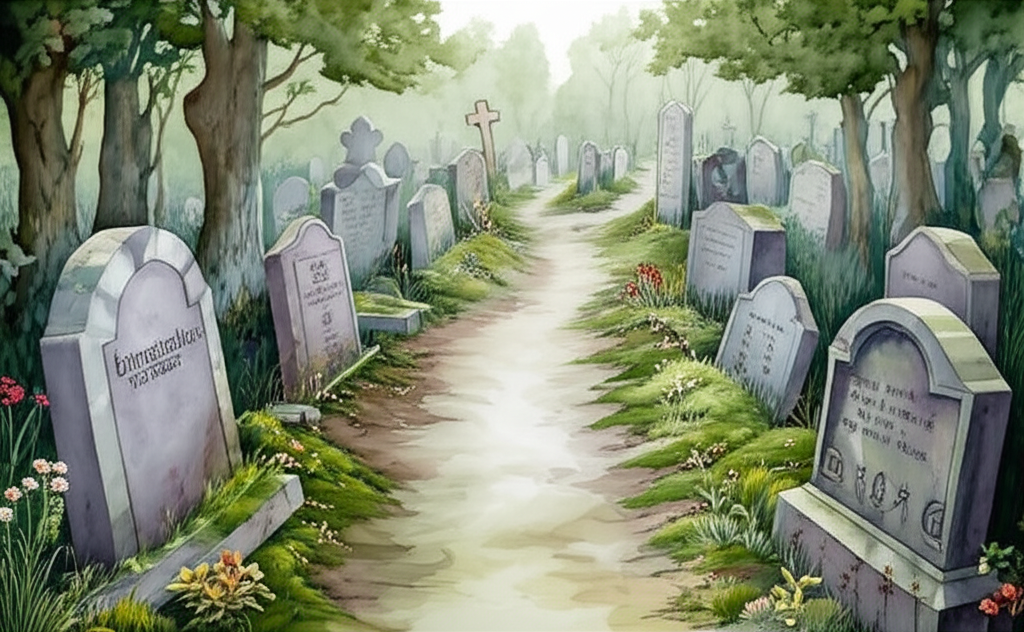
The superstition of never treading on a grave is a long-held belief rooted in historical and cultural anxieties surrounding death, the afterlife, and respect for the deceased. This prohibition, observed across various cultures for centuries, underscores humanity’s complex relationship with mortality and the potential consequences of disrespecting the final resting places of the dead.
Historical Background: The earliest documented reference to this superstition can be traced back to ancient Greece. Theophrastus (c. 372–c. 278 BC), successor to Aristotle at the Peripatetic School, included it in his study of human nature, The Characters. Published around 319 BC, the work detailed various moral character types, with one such character, ‘The Superstitious Man’, described as someone who ‘will not tread upon a tombstone.’ Although Theophrastus’ teachings were lost to the Western world after the fall of the Roman Empire, they resurfaced in the twelfth century through translations of Latin texts.
Cultural Beliefs in the Medieval Period: The superstition found fertile ground in the medieval world, where the ever-present threat of early death made people keenly aware of the importance of avoiding anything that might tempt fate. During this period, common belief held that the soul of the deceased lingered on Earth for a period, hesitant to fully depart for heaven or hell. This restless soul was thought to seek companionship for its journey. Therefore, actions that might antagonize the recently buried were seen as exceptionally unwise, potentially inviting misfortune or harm from the unsettled spirit. (See also The Covering of Mirrors after a Death, a similar superstition aimed at protecting against contact with the deceased).
Evolution of the Superstition: By the eighteenth century, the superstition had evolved beyond simply disturbing the deceased. It was believed that even unintentionally treading on a grave could bring misfortune upon the trespasser. This generalized sense of impending bad luck is captured in Samuel Taylor Coleridge’s 1798 poem, ‘The Three Graves’, where he wrote, ‘To see a man tread over graves I hold it no good mark; ’Tis wicked in the sun and moon, / And bad luck in the dark!’ Coleridge’s lines underscore the belief that such an action was inherently wrong and would inevitably lead to negative consequences, regardless of the time of day.
Modern Interpretations: The superstition of not treading on a grave persists today in many parts of the world, particularly in Europe and America. Its continued observance highlights the deep-seated respect for the dead that transcends cultural and historical boundaries. In Brittany, a predominantly Catholic region of France, this respect is taken to an extreme. The walled cemetery at the Church of Lanrivoare, where 7,727 ‘unnamed saints’ are buried, has a strict adherence to this superstition. Visitors are required to remove their shoes before entering the cemetery. One story recounts a visiting stranger who disregarded this rule and subsequently suffered a gruesome accident as a consequence. Whether literal or symbolic, this account illustrates the enduring power of the belief that disrespecting a grave can have severe repercussions. At its core, the superstition of never treading on a grave serves as a reminder of mortality and the need to treat the final resting places of the dead with reverence and respect.